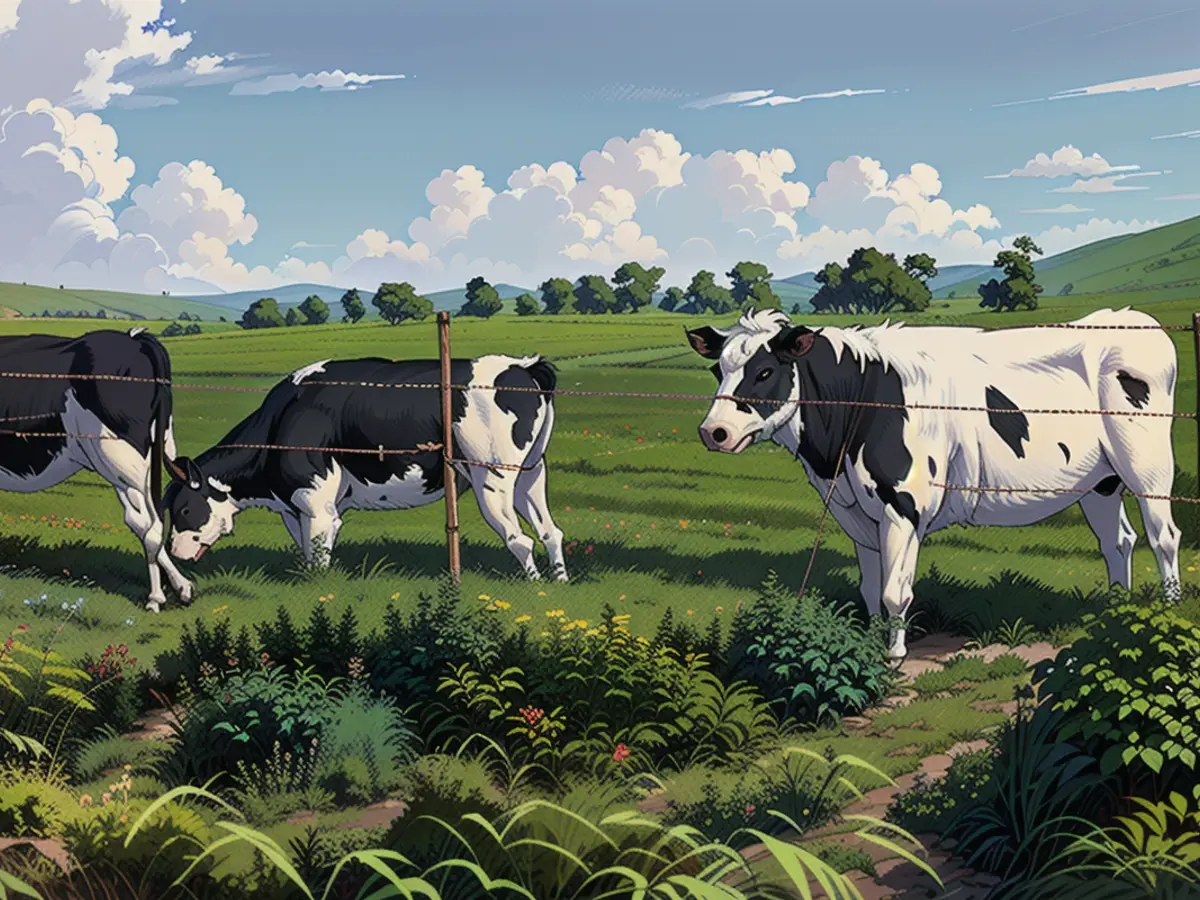The United States government reveals fresh monetary incentives for farms to curb bird flu's expansion in dairy herds.
For the next four months, the government will allocate $28,000 per farm to tackle the H5N1 bird flu outbreak in dairy cattle. A total of $98 million will be directed to the USDA's Animal and Plant Health Inspection Service for this purpose.
The USDA confirmed the first instance of bird flu in cows around late March. Since then, over 40 herds across nine states have tested positive.
Currently, health experts suggest that the virus doesn't transmit easily from human to human, resulting in a low risk for humans. However, they caution that the presence of the virus among domesticated animals, like cattle, puts it in closer contact with people. In case the virus adapts and evolves, it could potentially transform into a fully human pathogen, triggering another pandemic.
USDA Secretary Tom Vilsack stated during a conference call with reporters that their main objective is to contain H5N1 as an animal health issue. He added that their aim is to eradicate the virus in the cattle industry and, eventually, develop a vaccine to prevent future outbreaks.
Some dairy producers have expressed concerns about letting the government visit their farms to test livestock. Additionally, farm workers who show symptoms have been hesitant to get themselves tested for H5N1 flu as most of them are not compensated for taking time off work.
To address these concerns, USDA has announced plans to provide financial aid - up to $2,000 per month to affected farms - for producers who provide personal protective equipment to their workers or help them wash their uniforms. The same financial support will be extended to farmers who let their workers participate in a joint USDA-CDC research project.
Farm workers taking part in the CDC study will receive compensation for their time, the USDA noted.
Additional payments, up to $1,500 per farm, will be made available to assist in developing biosecurity strategies. USDA will also provide $100 per dairy farm for an in-line sampler for their milk testing.
Farms with cattle testing positive for H5N1 will receive up to $10,000 to cover their veterinary expenses. Furthermore, USDA will bear the costs of shipping samples to testing labs in the National Animal Health Laboratory Network.
If a farm contracts H5N1, the government promises to compensate farmers for any lost milk production.
Besides, HHS will contribute an extra $101 million to the CDC and the US Food and Drug Administration to aid their H5N1 response efforts.
The $101 million will be allocated to the CDC to enhance its monitoring of people exposed to infected animals, scale up its testing and analysis capabilities, determine the effectiveness of candidate vaccines, and manufacture, store, and distribute flu diagnostic kits. Furthermore, the FDA will receive $8 million to strengthen its surveillance capabilities at various checkpoints within the milk production system.
Read also:
- No food or coffee for three days, just juice, juice, juice instead: a field report
- How to get rid of the flu if you have caught it
- Doctors warn of penis fractures and other injuries during the Christmas season
- Corona or flu epidemic? These pathogens are making us cough and sniffle right now
Source: edition.cnn.com








